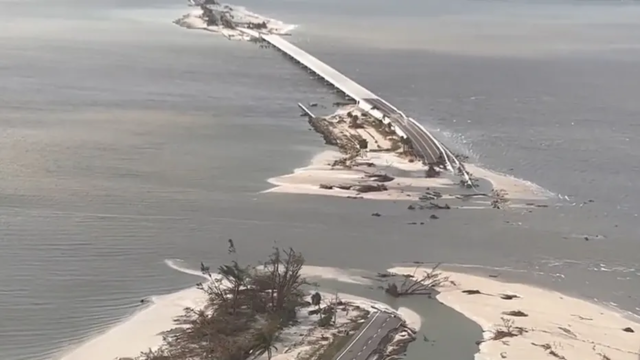Op-Ed: Hurricane Ian is Just the Beginning
Flooding partially submerged Sanibel Causeway in Florida. Photo courtesy of Wikimedia Commons.
Normally, Orange County, Florida is a beautiful area boasting Disney World and Universal Studios. However, due to Hurricane Ian, the streets of this county were recently submerged in knee-deep water. Hurricane Ian killed two people in Cuba, over 100 in Florida, and four in South Carolina, according to a CNN report.
Florida Governor Ron DeSantis announced that the Tampa Bay International Airport would close after 5 p.m. last Tuesday. As reported by the BBC, the state of Florida called in 5,000 Florida National Guard troops and has another 2,000 troops waiting in nearby states.
The National Aeronautics and Space Administration (NASA) even delayed the launching of their Artemis 1 moon rocket for the third time. Many grocery stores in the Tampa Bay Coast area were out of needed items. According to CNN, government officials in large cities like Tampa and Miami gave residents 10 free sandbags each to hold their property down during the hurricane. Many colleges and universities in Florida evacuated their campuses or are switching to online courses.
The highest wind speed around the center of the hurricane was around 150 miles per hour. That wind speed is tied for the fifth strongest on record. Many have speculated that the intensity of these hurricanes is growing due to climate change and global warming. Over 90 percent of the warmth from global warming from the past 50 years has been absorbed by the oceans. In addition to harming marine life, this can heat up the water, increasing the intensity of a hurricane or a tropical storm in that area.
Additionally, warming water can increase the probability of a storm surge. A storm surge is when the water level rapidly rises due to a storm. Due to the flooding of Hurricane Ian, some parts of Florida that are usually dry land had seven feet of water. In some parts of Florida, the average rainfall is 30 inches.
With climate change and the globe’s temperature speeding up, the next hurricane could be even more severe. The only way that we can stop this issue is if we can reduce the warming of the oceans. We can do this by stopping any greenhouse gas buildup in the atmosphere. This warms our planet because of the greenhouse effect, when the planet warms up due to sunlight being trapped on the Earth because of a buildup in greenhouse gases like methane and carbon dioxide in the atmosphere. A large amount of this trapped sunlight is absorbed by the oceans.
To maintain a hurricane, the waters must be at least 82°F. However, the Gulf of Mexico was 87°F at the time that Hurricane Ian was in the Gulf of Mexico. Even though this destruction is happening, people are doing things to help. The School’s very own Environmental Club has set up a fundraiser for victims of Hurricane Ian. All proceeds froom the fundraiser will go to the Red Cross.























































Evan Michaeli • Oct 11, 2022 at 2:57 pm
Great job Edward!